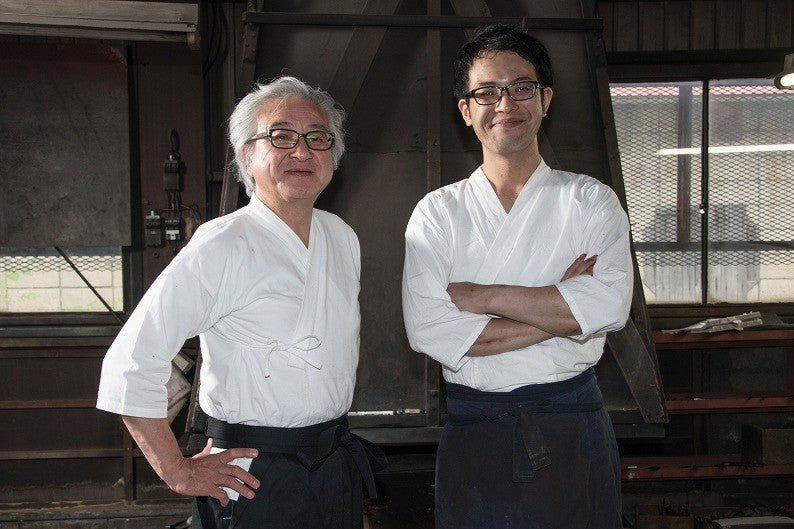This line that Nigara started producing recently is another step foward toward a intricate yet astonishing knife with decorative elements. The combination of various forging and finishing techniques have given blades from this line extensive amount of detial, but they are arranged so beautifully on one single knife that there are no compromise on visual integrity.
I believe there is a need to unfold these blades layer by layer, that is how complicated they are. The innermost core is the Hitachi Ginsan steel, which often considered as the stainless alternative of the famous White 2 carbon steel. What characterise Ginsan is the low alloy content other than chromium, which allows it to be sharpened easier than most of the other stainless steels, while maintaining good edge retention and hardness. This more premium steel forms a good foundation for this product line to have a good cutting edge and being easy to sharpen.
Cladded over the core steel is a beautiful damascus cladding. Unlike the Anmon series, this line doesn't have a dazzling raindrop damascus pattern. Instead, the alternating steel reveal themselves dense bands, with observable marks that indicate how they are struck and forms the final wavy pattern. Athough it is a dense pattern, the Kurozome etching have created a high contrast between two steels so each layer can be clearly identified. On the Gyuto and Petty with a Kiritsuke tip, since they have an additional grind put above the tip to thin them down further, the exposed pattern will have two density converging at the tip, making the beautiful pettern even more stunning.
The last layer of steel on top of the damascus takes up most of the flat area of the knive, it receives a Nashiji-like treatment, however, the finish is not uniform and there are still rough marks left from forging, indicating the stikes from tools and oxidation from heat treating that the blade have gone through. These spots of darker marks spreads organically across the blade, working in conjunction with the Nashiji finish to give the knife a weathered mineral look, almost like Nigara have forged its extensive history into the blade.
The final touch is the Kurozome finish, which uses acidic solution to darken the steel, as different composition react differently, some higher carbon steel will become darker than steel with chromium in it. This finish in my opinion is the finishing touch that brings the whole knife together, not only it gives contrast to the damascus, it coats the whole blade with a layer of dull, unifying yellow tint, along with the thickened Sanjo-style tang, the entire line emmits a sense of density, which is what I believe the intent of the designer/maker from Nigara.
For the cutting performance, this blade won't excell against the thinner blades like Shiro Kamo Kurokumo or geometically optimised blade from Yoshikane Hamono, its thicker bevel have already determined that it is a workhorse grind. Although it is not the best for food penetration, the edge sharpness is still quite up to our standard.
This Ginsan line produced by Nigara is one of the most complicated product line I've seen in terms of finishing techniques, yet it is well-curated so the end result is stunning to say at least. It will finally comes down to if you think the hefty price tag is worth it, but I believe it is not too much to ask for a quite practical stainless knife that is packed fully with wow factor.






















